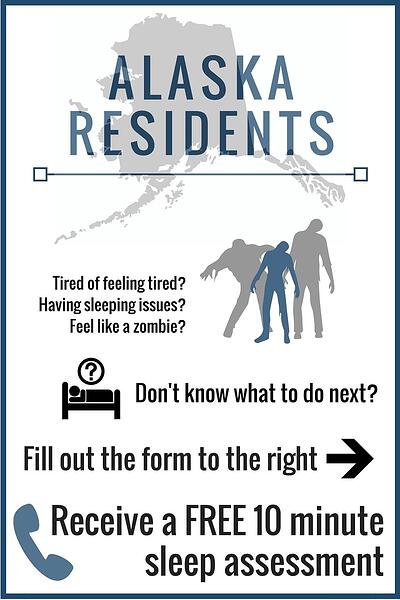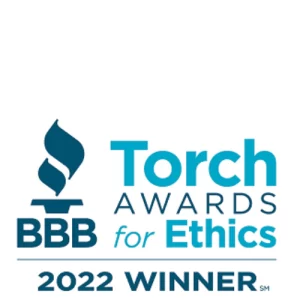Employee Safety
ALASKAN RESIDENTS: Take the first step to a good night's sleep today and safety at work tomorrow. Receive a 10-minute phone consultation to determine if a sleep study is right for you.

Can You Pass the DOT Physical if You Have Sleep Apnea?
Yes, but to pass your DOT physical, your OSA needs to be under control. Like many other “serious” health conditions, having OSA does not mean you are immediately disqualified from operating a CMV, the DOT just wants to know that the condition is under control and so you are healthy enough to operate such a large vehicle.
By its nature, OSA disrupts your sleep quality and patterns, and so can negatively impact your alertness and reaction times – two things that are necessary to avoid accidents.
Provided your sleep apnea is diagnosed and treated, you will pass the DOT physical.
Can I Pass the DOT Physical if I Have Undiagnosed Sleep Apnea?
The DOT physical has been updated in recent years to make sure drivers who are likely to suffer from sleep apnea are tested. This means that if you have a high BMI or a certain neck width, you will need to submit to a sleep study. If you have a BMI of over 40, or 33 and meet certain conditions, you will need to undergo further testing. To find out more about these requirements, read our article on BMI and the DOT physical.
Being diagnosed with a condition is always stressful, especially if you feel as though it can affect your livelihood. However, as soon as you have the right treatment you can pass your DOT and carry on with your work. This could take as little as 30 days.
Is a Sleep Apnea Test Required for a DOT Physical?
A sleep apnea test is not required for a DOT physical unless you meet certain requirements, which includes having a BMI over 40, a neck-width of over 17 inches for males or 15.5 inches for females, or a BMI over 33 while meeting other requirements, which you can find in our article about BMI requirements for the DOT physical.
How is Sleep Apnea Treated?
The FMSCA states that Positive Airway Pressure (PAP) therapy is the (and their) preferred treatment for OSA. This can be provided by an AutoPAP (Automatic Positive Airway Pressure) machine or the more well-known CPAP (Continuous Positive Airway Pressure) machine.
A CPAP machine provides pressurized, filtered air that keeps your airway open, allowing you to breathe easily. An AutoPAP essentially does the same thing, but changes with the sleeper’s needs.
Does DOT Require a CPAP for Mild Sleep Apnea?
If you have been diagnosed with sleep apnea, then this will depend on the results of your sleep study, and how recently you had that diagnosis. Largely, the DOT does require someone diagnosed with sleep apnea to have some form of PAP machine.
These machines ensure you get a full and refreshing night’s sleep and are fully prepared for the next working day. It’s a win-win situation, and drivers who have PAP machines report having an incredible quality of sleep and an all-around improved quality of life!
What are the CPAP Requirements for the DOT Physical?
If you are diagnosed with sleep apnea and have a PAP machine, you will need to have a DOT physical once every 12 months to ensure you are still managing your condition properly. This involves documenting your PAP use for 30 consecutive days (or, ideally, more) and showing that you have used your PAP device for at least 4 hours on 70% of nights in the past 30 days, you also need to report no major sleepiness or fatigue for your first DOT physical.
For your yearly DOT physical, you’ll need to show the CPAP report for the entire time period since the last medical card expired and the date of the physical.
The DOT wants to monitor your condition closely to ensure you are managing it well, because more than 60-90% of people with sleep apnea have it as a symptom of obesity. Obesity can lead to many health complications that may make you a risk behind the wheel of a CMV, so frequent physicals will ensure no condition goes unnoticed.
Do You Need a CPAP Report for a DOT Physical?
As we covered above, if you have a CPAP (or AutoPAP) machine, you will need to bring a report to your DOT physical to demonstrate that your sleep apnea is under control and that you take it seriously. If it is your first DOT physical, this will be 30 days of records, and for your yearly physical, this will be a report that covers the time from the expiration of your last medical card until the date of your DOT examination.
If you cannot meet these requirements, your medical examiner may give you a 30-day certification to allow you to continue working while collecting 30 days of continuous data. If this is done, they can extend it to 60 days, and if that requirement is also reached, they’ll extend it to 90 days, and finally, you’ll get your one-year medical certificate. In short, it’s well worth staying on top of your records!
Can CDL Drivers Have Sleep Apnea?
Yes – all of the above advice applies. You can have sleep apnea, but it just needs to be under control. Should you refuse treatment once OSA has been identified, you will be denied your CDL. Remember that every element of the DOT physical is geared toward ensuring that you and the public are safe. OSA treatments are easy to use and once your OSA is under control, you’ll not only feel better thanks to better sleep, but you can have a long career.
What is the Maximum DOT Physical Sleep Apnea BMI?
If you have a BMI of over 40, you’ll need to have a sleep study if you have not been diagnosed with sleep apnea.
Finding out you have sleep apnea is never the end of your career – it simply requires treatment so you can sleep better and thrive in your daily life. Once you have a diagnosis, all you need to do is keep a record of your usage and you won’t have a problem passing the DOT physical in the future. You’ll be able to continue enjoying your life and your job as much, if not more, than you did before, knowing that you are protecting your health and that of others.
What are the New DOT Physical Requirements for Sleep Apnea in 2023?
The new DOT physical requirements for sleep apnea are around detecting the likelihood of you having sleep apnea. If you meet certain conditions, your medical examiner is obligated to submit you for a sleep study to find out if you suffer from sleep apnea or not. If you do not meet these requirements, you will not have to submit to a sleep study.
If you have a BMI over 33 and 3 to 4 of the following conditions, your medical examiner will need to submit you for a sleep study before allowing you to pass your physical:
- Over 42 years old
- Male or post-menopausal
- Hypothyroidism
- Neck size of over 17 inches for males, or 15.5 inches for females
- Small airway
- Loud snoring
- Hypertension (treated or not)
- Type 2 diabetes (treated or not)
- History of stroke, coronary artery disease, heart arrhythmias
- Micrognathia or retrognathia
- Witnessed sleep apneas







